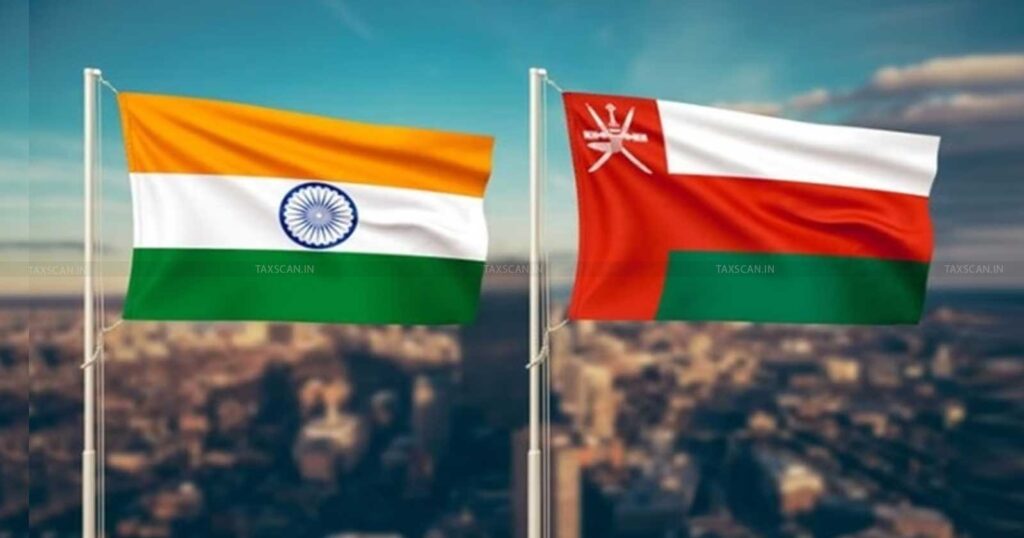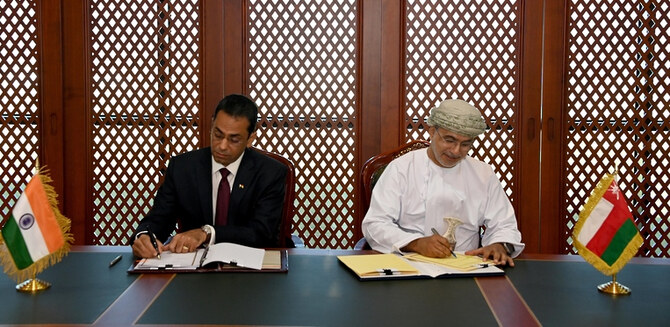Muscat, Oman — In a significant move to bolster economic relations, India and Oman have agreed to amend their existing Double Taxation Avoidance Agreement (DTAA). This development aims to align the treaty with international standards, simplify tax procedures, and promote greater cooperation in tax matters. The decision reflects the growing strategic and economic ties between the two nations, aiming to facilitate trade, investment, and transparency.
Enhancing Bilateral Taxation Framework
The original DTAA between India and Oman was implemented in 1997. Over the years, global economic dynamics and international taxation norms have evolved, necessitating updates to such agreements. The recent protocol to amend the DTAA reflects both nations’ commitment to adapting to these changes and ensuring a more efficient taxation framework.

By revising the DTAA, India and Oman aim to eliminate double taxation, prevent fiscal evasion, and foster a more transparent tax environment. This amendment is expected to facilitate cross-border trade and investment by providing clarity and reducing the tax burden on entities operating in both countries. Businesses that were previously cautious about navigating the complexities of dual taxation can now operate with increased confidence.
Progress Towards a Comprehensive Economic Partnership Agreement (CEPA)
Alongside the DTAA amendment, both countries have expressed a strong desire to expedite discussions for an early signing of the Comprehensive Economic Partnership Agreement (CEPA). Formal negotiations for the CEPA commenced in November 2023 and are currently in advanced stages. The CEPA aims to enhance bilateral trade by reducing tariffs, facilitating market access, and promoting investments. For India, this agreement represents a strategic effort to strengthen economic ties with Gulf Cooperation Council (GCC) countries, following a similar pact with the United Arab Emirates in 2022.
The anticipated CEPA is expected to bring transformative benefits by opening new markets, promoting technology transfer, and encouraging collaboration in key industries like renewable energy, technology, infrastructure, and manufacturing. It would also support India’s ambition to become a global manufacturing hub while enabling Oman to diversify its economy beyond oil and gas.
Current Trade Landscape
Oman holds a significant position as India’s 30th largest trade partner and ranks third among GCC countries in terms of export destinations, following the UAE and Saudi Arabia. However, bilateral trade between India and Oman experienced a decline, standing at $8.94 billion in the fiscal year 2023-24, compared to $12.39 billion in 2022-23. This decrease underscores the need for renewed efforts to invigorate trade relations. The amended DTAA and the prospective CEPA are anticipated to reverse this trend by creating a more conducive environment for trade and investment.
India primarily exports mineral fuels, cereals, machinery, and electrical equipment to Oman. On the other hand, Oman’s exports to India include petroleum products, chemicals, and metals. With the revised tax treaty and CEPA, businesses from both sides can expect a streamlined process, reducing complexities in tariffs and taxes.
Strategic Discussions and Future Prospects
During his visit to Muscat, India’s Commerce and Industry Minister Piyush Goyal co-chaired the 11th Session of the India-Oman Joint Commission Meeting (JCM) with Oman’s Minister of Commerce, Industry, and Investment Promotion, Qais bin Mohammed Al Yousef. The JCM facilitated productive discussions on enhancing cooperation in various sectors, including technology, food security, healthcare, and renewable energy. Both ministers conducted a detailed review of bilateral trade and economic relations, identifying concrete steps to strengthen business ties. The commitment to expediting the CEPA negotiations reflects a shared vision of a robust economic partnership that leverages the strengths of both nations.
Both countries have recognized the immense potential in the energy sector, with a focus on renewable energy projects such as solar and wind power. India, seeking to expand its renewable energy capacity, can benefit from collaboration with Oman, which has significant solar energy potential. Simultaneously, Oman can explore investment opportunities in India’s rapidly growing green energy market.
Implications for Businesses and Investors
The amendment of the DTAA and the anticipated CEPA hold significant implications for businesses and investors in both countries. A modernized tax treaty will provide greater certainty and reduce the risk of double taxation, thereby encouraging cross-border investments. The CEPA is expected to open new avenues for trade by reducing tariffs and non-tariff barriers, facilitating smoother market access, and enhancing collaboration in various sectors. Businesses in industries such as technology, renewable energy, and food security may find new opportunities arising from these agreements.
Additionally, the simplification of tax procedures and increased transparency will make it easier for small and medium-sized enterprises (SMEs) to explore business opportunities in both countries. The collaboration also aims to boost tourism, cultural exchanges, and educational partnerships, further strengthening people-to-people connections.
Broader Geopolitical Implications
India’s strategic outreach to Oman aligns with its ‘Look West’ policy, aiming to deepen ties with the Gulf region, a crucial area for energy imports and remittances. As Oman seeks to diversify its economy and reduce its dependency on oil revenues, India’s rapidly growing economy and market size present an attractive partnership. The strengthening of India-Oman ties is not just significant for bilateral relations but also for regional stability and economic integration within the Gulf region.
Conclusion
The decision by India and Oman to amend their tax treaty and pursue a comprehensive economic partnership marks a pivotal step in strengthening bilateral relations. These initiatives are poised to enhance economic cooperation, stimulate trade and investment, and foster a more integrated and prosperous future for both nations. As global economic landscapes continue to evolve, such proactive measures underscore the importance of adaptive and forward-looking policies in fostering sustainable economic growth and mutual prosperity.
By embracing collaborative efforts and modernizing their economic agreements, India and Oman set a precedent for other nations seeking to strengthen their bilateral ties through diplomacy, trade, and economic integration.
Discover Oman: The Next Big Destination for Indian Travelers



